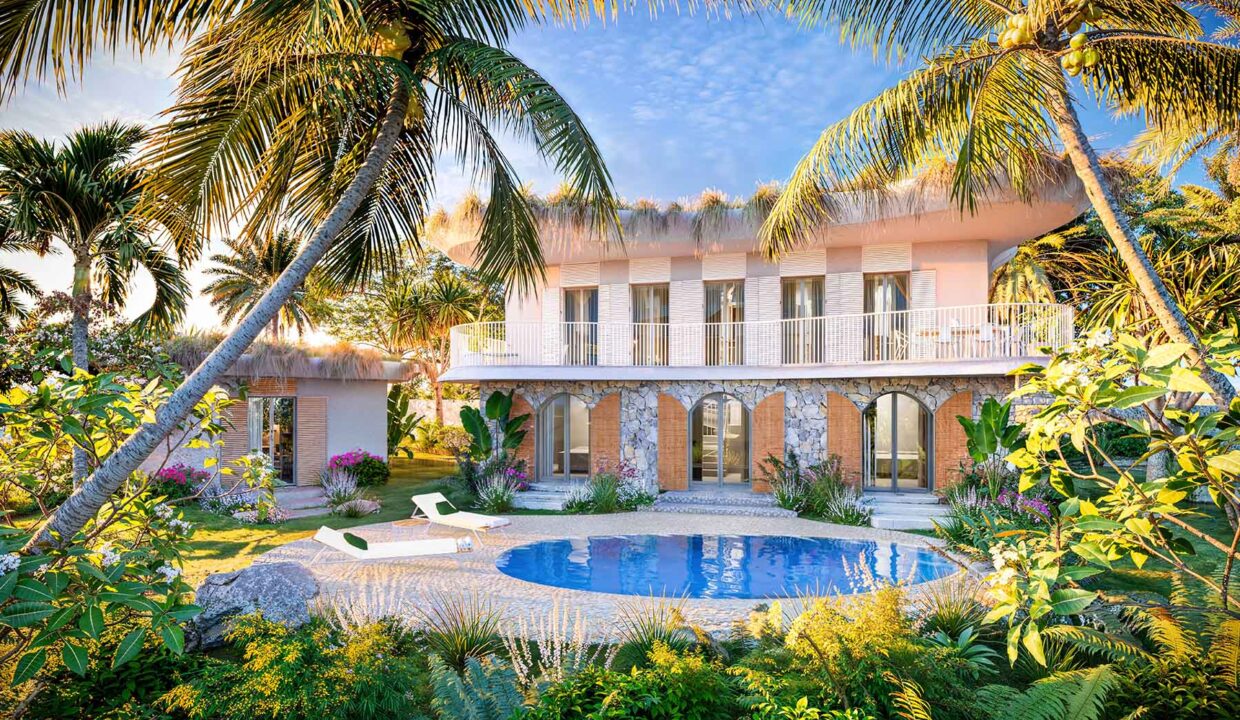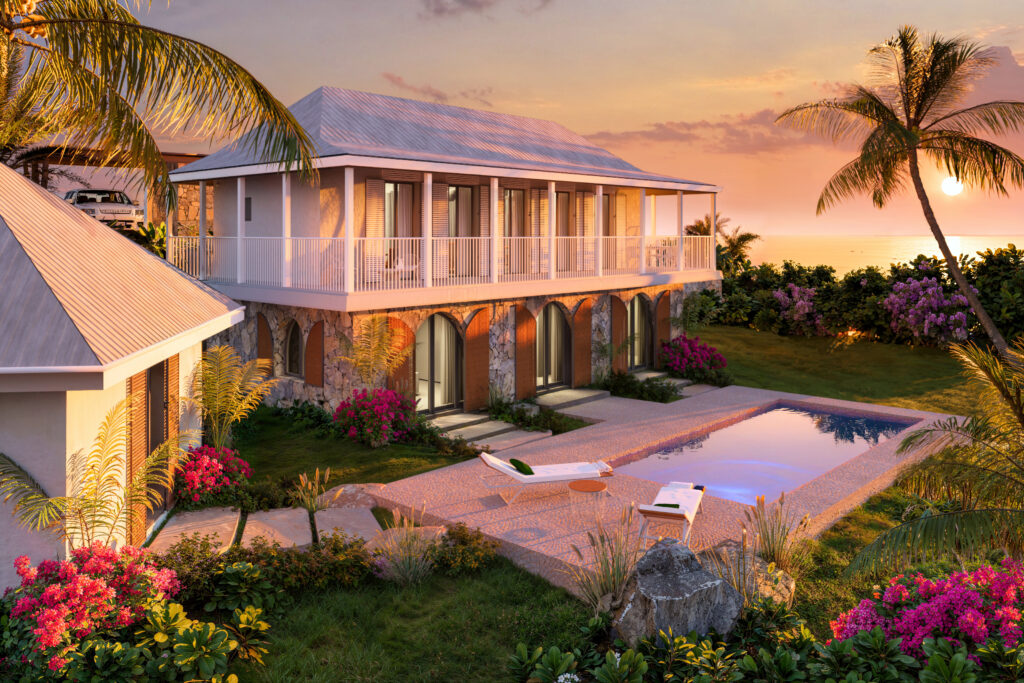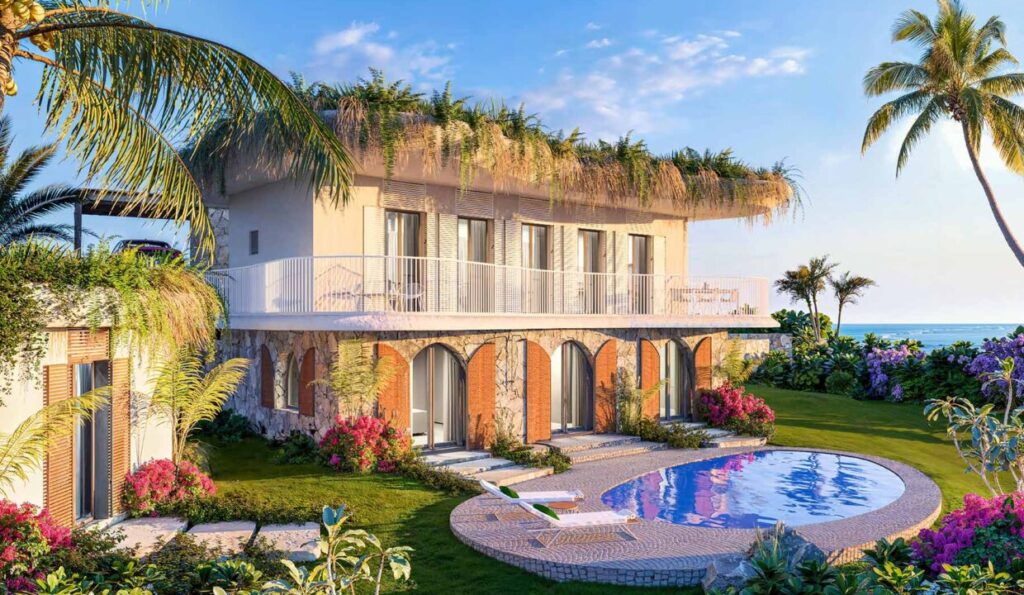
Focus on bioclimatic construction in Mauritius and two bioclimatic villas that Côté Sud is selling in Baie du Cap, at Domaine d’Anbalaba.
Protecting the environment is a top priority. All sectors of activity must make colossal efforts to reduce their impact, and real estate and construction are no exception.
Tropical countries are increasingly integrating the principles of bioclimatic design. They offer villas and apartments that are sustainable, comfortable, harmonious and economical.
WHAT IS BIOCLIMATIC CONSTRUCTION?
Bioclimatic construction favors natural components and uses as few polluting technologies as possible. The environment plays a key role in optimizing comfort and light, while reducing energy consumption.
A bioclimatic home is one that is part of a sustainable development approach, has a low energy impact and blends harmoniously into its environment.
This type of design offers numerous advantages. Among them: pleasant temperature in summer and winter, brightness, openness to the outside world with optimized thermal insulation, reduced energy costs, etc.
In tropical countries like Mauritius, bioclimatic construction is even more relevant than elsewhere, since the climate and natural resources are perfectly suited to it.

THE FUNDAMENTAL PRINCIPLES OF BIOCLIMATIC CONSTRUCTION
In the interests of both ecology and the economy, a real estate development needs to adapt and become one with its environment to get the best out of it. This is where bioclimatic construction comes into its own.
Its main objective: to reduce energy requirements. In tropical countries, these are mainly air conditioning and lighting.
To be efficient, i.e. to consume as little energy as possible, a bioclimatic home must be based on four fundamental pillars. These are: layout, zoning (layout of rooms), compactness (preferable square or rectangular shape) and orientation.
In addition to these 4 main pillars, other elements need to be considered: building size and optimization, insulation, ventilation, etc.
COMPONENT SELECTION AND ENVIRONMENT OPERATION
The fundamentals of bioclimatic construction are undeniably linked to the choice of materials used. These include wood, raw earth and hemp.
The use of natural resources such as sun, water and vegetation must also be taken into account. Thanks to its favorable climate and environment, Mauritius is seeing the development of eco-friendly villas that blend in perfectly with its beautiful landscapes.
A case in point are the bioclimatic villas at Domaine d’Anbalaba, located in Baie du Cap.
NOMADIC VILLAS AT DOMAINE D’ANBALABA: TWO MODELS OF ECO-LUXURY VILLAS
Baie du Cap is a charming fishing village.
The 14 villas in the Nomadic range are nestled on the heights of the village in a green and soothing environment. They feature large windows with uninterrupted views of the lagoon and Morne Brabant. Thanks to a cross-ventilation system, their spacious living areas keep you cool without the need for air conditioning.
The Guetali model, inspired by the homes of yesteryear

The 6 Guetali bioclimatic villas are characterized by their architecture, typical of 19th-century Mauritian estates. They are influenced by the design of residences such as the magnificent Maison Eureka. They offer a true immersion between the architectural heritage of Mauritius and modern comfort.
The Rivulet model, influenced by its tropical environment
Those 8 bioclimatic villas named Rivulet combine comfort and modernity thanks to their avant-garde architecture. The accessible green roof provides excellent thermal insulation. The villa blends perfectly into the lush landscape, and its owners enjoy total harmony with nature.

For more information on Nomadic bioclimatic villas and all the possibilities for purchasing at Domaine d’Anbalaba, contact Côté Sud.


